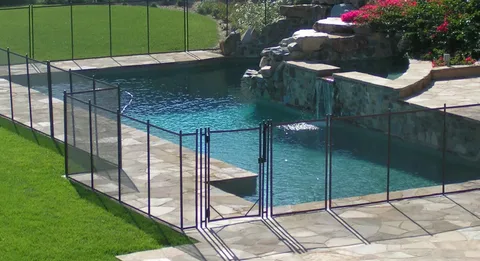Ensuring the safety of your pool area is essential, especially if you have children or pets. One of the most effective safety measures is installing the right pool fence. But how do you know what height your pool fence should be? What codes do you need to follow? This article covers everything you need to know about pool fence heights and codes to keep your swimming area secure and compliant.
Why Pool Fence Heights Matter
Pool fences are not just a decorative addition to your backyard; they play a critical role in preventing accidents and drownings. The height of your pool fence is specifically regulated to deter unauthorized or unsupervised access. If the fence is too low, it may be easy to climb over, defeating its purpose entirely.
Understanding Pool Fence Codes: What Are They?
Pool fence codes are local, state, or national regulations designed to enhance safety around swimming pools. These codes set minimum standards for fence height, gate locks, materials, and spacing between bars or panels. It’s important to check with your local authorities or homeowner’s association (HOA) for specific regulations because codes can vary widely depending on your location.
Standard Pool Fence Height Requirements
In most places, the minimum height for pool fences is typically set between 4 feet (48 inches) and 5 feet (60 inches). For example:
- Residential pools: Generally require fences that are at least 4 feet tall.
- Public or commercial pools: Often require fences that are 5 feet or higher.
Additionally, gates must be self-closing and self-latching to ensure they are not left open accidentally. Some areas also require the latch to be out of reach of small children.
Materials and Design Considerations
When choosing a pool fence, height is not the only factor. Codes also regulate the materials and design to prevent climbing hazards. For instance, fences with horizontal bars that can be used as footholds are often prohibited. Mesh fences, wrought iron, aluminum, and vinyl are popular choices that meet safety standards and add aesthetic value.
Common Mistakes to Avoid
Many pool owners make the mistake of assuming that any fence is sufficient. However, non-compliant fences can lead to fines, increased liability, or worse, accidents. Make sure you:
- Verify your local pool fence codes.
- Use proper materials and designs.
- Maintain the fence regularly to ensure it stays secure.
Final Thoughts: Everything You Need to Know About Pool Fence Heights and Codes
Understanding everything you need to know about pool fence heights and codes is crucial for safety and legal compliance. By adhering to the recommended height and design standards, you protect your loved ones and avoid costly penalties. Always check local regulations before installation and consider professional advice to ensure your pool fence meets all safety requirements.

